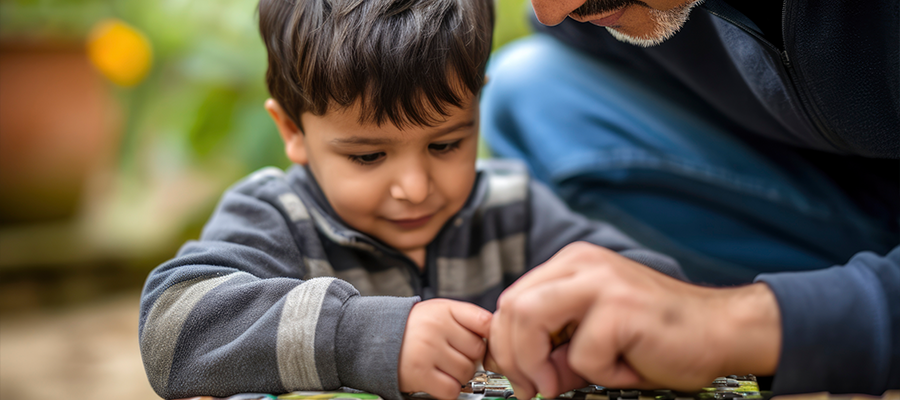At our clinic, we strongly believe in equipping children and adolescents with effective tools to understand and regulate their emotions. One such evidence-based approach is Rational Emotive Behavior Therapy (REBT), a powerful method developed by Albert Ellis in the 1950s. REBT has been widely used to address emotional disturbances in children and adolescents (Banks & Zionts, 2009), making it a practical and relatable framework in both school and therapeutic settings.
Understanding Emotions Through REBT
REBT helps us differentiate between two important categories of emotions:
- Unhealthy Negative Emotions (UNEs) such as rage, panic, or guilt.
- Healthy Negative Emotions (HNEs) like concern, sadness, or remorse.
According to REBT, these emotions often stem from irrational beliefs, which can be identified and transformed to bring about healthier emotional experiences.
Step-by-Step Approach to Emotional Regulation
When working with children or adolescents, especially in school settings, here’s how educators or mental health professionals can apply the REBT model:
1. Identifying Emotions and Measuring Intensity
Begin by helping the child identify the emotions they’re feeling. This can be facilitated using tools like:
- Emotional journaling
- The emotional wheel
- Mood meters
- Discussing real-life scenarios
Once identified, ask the child to rate the intensity of that emotion on a scale of 1 to 10 (1 being very mild and 10 being extremely intense). Then, ask them to rate their desired emotional state on the same scale.
Example:
A student struggling with anger might rate their emotion as 8 or 9. When asked where they’d
like to be, they might say 3 or 4.
2. Understanding the Link Between Emotions
Next, help the child explore whether their emotions are connected or occur independently. For instance, if a child says they feel sad and guilty after being aggressive, the facilitator might ask:
"If you felt less guilty, would you still feel sad?"
This clarifies whether guilt precedes sadness or vice versa—or whether they’re unrelated. If emotions are linked, it makes sense to begin by addressing the primary emotion. If not, each emotion can be worked on independently, based on the child's readiness and preference.
3. Replacing Unhealthy Emotions with Healthier Alternatives
Drawing from Dryden’s work, REBT encourages the transformation of unhealthy emotions into healthier alternatives:
- Unhealthy anger → Healthy assertion
- Unhealthy guilt → Remorse
- Unhealthy anxiety → Concern
These healthy emotions do not deny the negative experience but empower the child to respond constructively.
4. Moving Towards Neutral and Positive Emotional States
Further, REBT also explores the possibility of replacing even healthy negative emotions with neutral or healthy positive emotions—but not with positive unhealthy emotions (e.g., euphoric highs or limerence).
Illustrative Table (Collard & Kelley, 2011):
| Unhealthy Negative Emotion | Healthy Negative Emotion | Neutral Emotion | Healthy Positive Emotion | Positive Unhealthy Emotion |
|---|---|---|---|---|
| Unhealthy | Healthy Negative | Neutral | Healthy Positive | Unhealthy Positive |
| Anger | Assertion / Annoyance | Peace | Care and Affection | Limerence |
| Anxiety | Concern | Calm | Excitement | Ecstasy |
| Depressed | Sad | Content | Happy | Euphoric |
Once alternatives are discussed, return to the child and ask:
“If your anger was replaced with assertiveness, would you still feel sad and guilty?”
This not only introduces the concept of emotional substitution, but also encourages self-regulation through scaling. Helping children reduce emotional intensity from, say, 9 to 4, can prevent escalation and promote better coping strategies.
Additional Strategies for Emotional Regulation
Apart from REBT-based techniques, other complementary practices include:
- Setting small, realistic goals
- Practicing mindfulness to enhance emotional awareness
- Learning and applying relaxation techniques
For school-age children, assertiveness training has shown particular promise—not only in managing aggression but also in addressing bullying, body image concerns, and experiences of discrimination. Supporting children in learning to express themselves confidently and respectfully is a key part of their emotional development. Assertiveness training also aids in helping the child better deal with and respond to their emotions.
Conclusion
By integrating REBT principles in school and clinical settings, we can guide children and adolescents to recognize, evaluate, and transform their emotional experiences. These skills lay a foundation for better mental health, self-awareness, and resilience—helping them navigate both everyday challenges and larger life transitions with strength and clarity.
References:
Banks, T., & Zionts, P. (2009). REBT used with children and adolescents who have Emotional and Behavioral Disorders in Education Setting: A Review of Literature. Journal of Rational Emotive and Cognitive Behavioral Therapy, 27, 51–65.
Collard, J., & Kelley, M.O. (2011). Rational Emotive
Behavior Therapy: A Positive Perspective.
Journal of Rational Emotive and Cognitive Behavioral Therapy, 29, 248–256.
https://doi.org/10.1007/s10942-011-0146-0
Dryden, W. (n.d.). What is Rational Emotive Behavior Therapy (REBT): Outlining the Approach by Considering Four Elements of its name [PhD thesis]. Goldsmiths, University of London.

